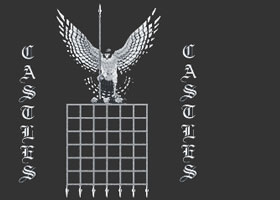Missiles thrown from the Mangonel
The Mangonel could launch missiles across long distances. Attackers were ingenious in their ideas for launching projectiles which would cause as much distress and discomfort inside the castle walls. Mangonel missiles included the following: - Stones
- Sharp wooden poles and darts
- Fire
- Casks of Burning Tar
- Burning Sand ( this became trapped inside armor )
- Pots of Greek Fire
- Dung
- Dead, sometime mutilated, bodies
- Disease ridden bodies
- Body parts
- Dead animals
- Any rotting matter
- Quicklime
The Mangonel and Medieval Warfare
The castle owners ensured that their castles were built to withstand or combat a siege. Medieval Castles were built with access to fresh supplies from the sea. Various forms of defence including the Barbican, Portcullis, Gatehouse, Moat, Crenellations, Murder Holes etc were included in castle design. Castle attackers employed siege Warfare including starvation tactics. Castle walls could fall due to bombardment from Siege Engines such as the trebuchet, the mangonel, battering ram, and of course, the Ballista. Mangonel
The Mangonel was the most common catapult used during the Medieval Period due to its versatility and manoeuvrability. Its only problem was that it was not very accurate. An everyday weapon employed during the Medieval era where war and violence were expected. |

